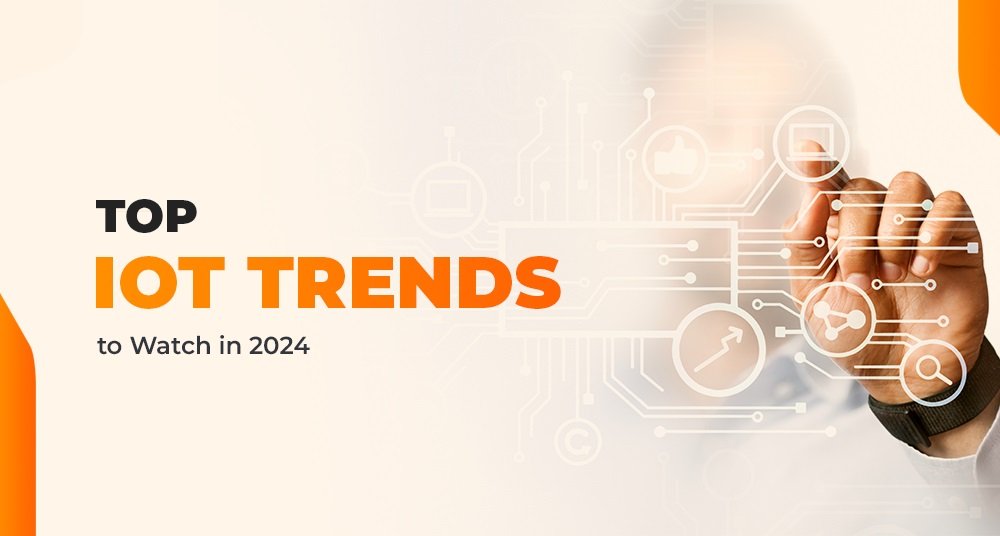The Internet of Things (IoT) continues to evolve rapidly, transforming industries, enhancing efficiencies, and creating new opportunities for businesses and consumers alike. As we move into 2024, the IoT landscape is set to witness significant advancements driven by emerging technologies, increased connectivity, and innovative applications. This article explores the top IoT trends to watch in 2024, shedding light on the developments that are poised to shape the future of IoT.
1. Expansion of 5G Networks and IoT Integration
The rollout of 5G networks is accelerating globally, providing the high-speed, low-latency connectivity required to support massive IoT deployments. In 2024, we can expect to see a deeper integration of IoT Trends devices with 5G technology, enabling faster data transfer rates, improved device connectivity, and reduced network congestion.
- Impact on Smart Cities: 5G will enable the deployment of more sensors, cameras, and devices in smart cities, improving traffic management, public safety, and urban planning.
- Industrial IoT (IIoT): 5G’s high bandwidth and low latency are critical for Industrial IoT applications such as autonomous vehicles, remote robotics, and real-time monitoring, leading to increased efficiency and productivity in manufacturing and logistics.
2. Artificial Intelligence (AI) and Machine Learning (ML) in IoT
AI and ML are playing an increasingly vital role in enhancing IoT applications by providing real-time analytics, predictive maintenance, and automated decision-making capabilities. In 2024, the convergence of AI, ML, and IoT will lead to smarter, more autonomous IoT solutions.
- AI-Powered Edge Computing: Edge computing, which brings data processing closer to the data source, will be enhanced by AI algorithms that can analyze data locally on devices. This will reduce latency, save bandwidth, and provide faster insights.
- Predictive Maintenance and Automation: AI-driven IoT devices can predict equipment failures in industries, reducing downtime and maintenance costs. Automated processes enabled by ML can optimize supply chains, energy usage, and resource allocation.
3. Edge Computing and Decentralized IoT Networks
As IoT networks grow, there is an increasing need for decentralized data processing to reduce latency and improve response times. Edge computing addresses this need by processing data closer to where it is generated rather than relying on centralized cloud servers.
- Benefits for Real-Time Applications: Applications such as autonomous vehicles, smart healthcare devices, and augmented reality (AR) systems require near-instantaneous data processing, which is facilitated by edge computing.
- Enhanced Security and Privacy: With data being processed locally at the edge, the risk of data breaches and exposure during transmission is reduced. This trend is particularly important for sensitive applications in healthcare and finance.
4. IoT Security and Privacy Enhancements
As the number of IoT devices continues to grow, so do the risks associated with cybersecurity threats. In 2024, we can expect to see a heightened focus on improving IoT security measures, driven by both regulatory requirements and technological advancements.
- Zero Trust Architecture: The adoption of Zero Trust security models, which require continuous verification of devices and users, will be crucial for securing IoT networks against cyber threats.
- Blockchain for IoT Security: Blockchain technology is gaining traction as a method for securing IoT data through decentralized, immutable ledgers that can prevent unauthorized access and tampering.
5. The Rise of IoT in Healthcare
The healthcare sector is increasingly leveraging IoT to enhance patient care, streamline operations, and reduce costs. In 2024, IoT is set to revolutionize healthcare with more advanced wearable devices, remote monitoring solutions, and connected medical equipment.
- Remote Patient Monitoring: IoT-enabled wearable devices and sensors will allow for continuous monitoring of patients’ vital signs, enabling early detection of health issues and reducing hospital readmission rates.
- Smart Medical Devices: Connected medical devices, such as smart inhalers and insulin pumps, will provide personalized treatment and real-time data to healthcare providers, enhancing the quality of care.
6. IoT-Driven Smart Homes and Buildings
Smart home technology continues to gain popularity, and 2024 will see further advancements in this area, with more integrated and intelligent systems being developed to improve convenience, security, and energy efficiency.
- Voice-Activated and AI-Driven Automation: Voice-activated assistants like Amazon Alexa and Google Assistant will become even more integrated with home automation systems, allowing users to control appliances, lighting, and security systems through natural language commands.
- Energy Management and Sustainability: Smart buildings equipped with IoT sensors can monitor energy usage and optimize heating, ventilation, and air conditioning (HVAC) systems to reduce energy consumption, lower costs, and minimize environmental impact.
7. IoT in Retail and Customer Experience
The retail industry is set to benefit from IoT innovations that enhance customer experience, streamline operations, and provide valuable insights into consumer behavior.
- Smart Shelves and Inventory Management: IoT-enabled smart shelves can monitor stock levels in real-time, alerting store managers when products need restocking. This reduces out-of-stock scenarios and improves inventory management efficiency.
- Personalized Shopping Experiences: IoT devices, such as beacons and smart mirrors, can provide personalized recommendations and promotions based on customer preferences and in-store behavior, enhancing the shopping experience.
8. Agricultural IoT (Agri-IoT) for Precision Farming
Agriculture is increasingly adopting IoT solutions to optimize farming practices, reduce costs, and increase yield. In 2024, precision farming powered by IoT Trends will become more prevalent, driven by advancements in sensor technology, AI, and data analytics.
- Smart Irrigation Systems: IoT sensors can monitor soil moisture levels and weather conditions, enabling farmers to optimize irrigation schedules and reduce water wastage.
- Livestock Monitoring: IoT-enabled devices can track the health, location, and activity of livestock, helping farmers manage their herds more efficiently and detect potential health issues early.
9. Sustainable IoT Solutions
With the increasing focus on sustainability, IoT is being leveraged to promote environmentally friendly practices across various industries. In 2024, sustainable IoT solutions will become more mainstream, enabling companies to reduce their carbon footprint and achieve sustainability goals.
- Smart Grids and Energy Management: IoT sensors and devices will play a key role in optimizing energy consumption in smart grids, reducing energy waste, and integrating renewable energy sources.
- Waste Management and Recycling: IoT solutions will help in monitoring waste levels and optimizing waste collection routes, leading to more efficient and environmentally friendly waste management practices.
10. The Growth of Digital Twins in IoT
Digital twins, virtual replicas of physical assets, are becoming increasingly popular in the IoT Trends landscape. In 2024, the use of digital twins will expand across industries such as manufacturing, healthcare, and smart cities to simulate, predict, and optimize the performance of real-world systems.
- Industrial Applications: Digital twins can monitor the performance of machinery in real time, predict failures, and optimize maintenance schedules, reducing downtime and increasing operational efficiency.
- Smart Cities: Digital twins can simulate various urban scenarios, such as traffic flow and energy usage, allowing city planners to optimize resources and improve city management.
Conclusion
The IoT landscape is set to undergo significant transformation in 2024, driven by advancements in 5G, AI, edge computing, and enhanced security measures. These trends will not only lead to smarter, more efficient IoT solutions but also address the growing challenges related to data privacy, security, and sustainability. As IoT continues to evolve, it will unlock new opportunities across industries, revolutionize how we live and work, and shape the future of digital transformation.
Also, Read About, The Future of Wearable Technology: Trends and Predictions.




